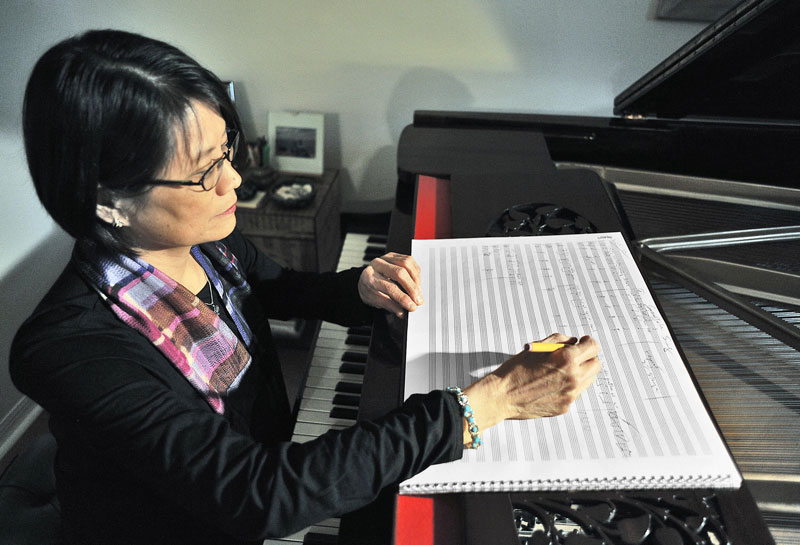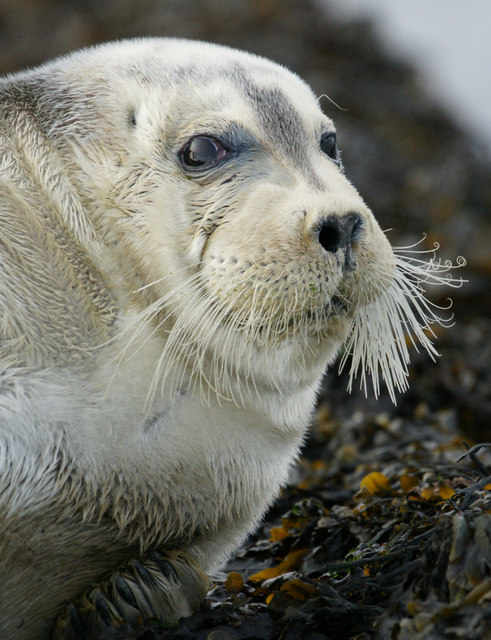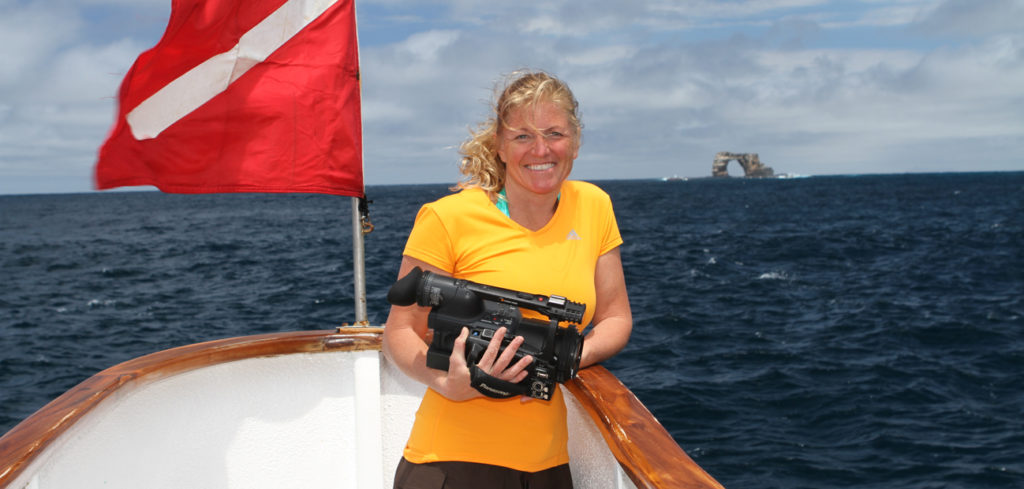by Jarrett Hoffman

Here’s another one that’s even more technologically ambitious. Stella Sung’s Oceana was premiered by Christopher Wilkins and the Boston Landmarks Orchestra last summer, and will receive its Northeast Ohio premiere in the hands of Wilkins and the ASO on Saturday, February 9 at 8:00 pm at E.J. Thomas Hall.
Oceana was inspired by the issue of ocean noise pollution — like from seismic testing and large ships — which disrupts the ability of many animals to communicate, navigate, and find food. Meshing orchestral sounds with those of whales, dolphins, seals, and other animals, Sung penned an ode to oceanic ecosystems and their importance to all forms of life.
The work also involves two other form of media: a film by Annie Crawley, and a smartphone app with five marine animal sounds for the audience to play at a specific moment in the piece.
Oceana is part of a sea-themed program titled “La Mer” which includes that Debussy classic, an abridged version of the cantata Moby Dick by Bernard Herrmann (yes, the man partly responsible for anxieties around showering) which features tenor Timothy Culver and baritone Brian Keith Johnson, and Barber’s Adagio for Strings.
The latter looks at first like an outlier, but should fit in nicely with the ASO’s inclusion of a photographic essay themed around climate change: David Arnold’s Then and Now, Changes from Above and Below.
Stella Sung, a professor at the University of Central Florida, writes in a breadth of genres and styles: multimedia isn’t so much a theme throughout her work, but one compositional choice she can comfortably make. During our recent telephone conversation, she laughed about how she used to work with slides — “That was a long time ago, but that was the technology of the day.”
More recently, Sung has enjoyed working with animation. “I was in the music department for a long time here at UCF. Then I moved over to digital media.” She directs the University’s CREATE program (Center for Research and Education in Arts, Technology, and Entertainment). “I started working with the animation students, and just really loved that.”
And as she said, “The journey continues with Oceana,” with its recorded sounds, accompanying film, and involvement of an app. The latter was approved by Apple just last week, making this the first performance to utilize it. She found out a few days after our phone call, and sent me an email with the update: “You can find it in the Apple Store by searching Oceana Music,” she wrote. “It’s free and very easy to use.”
She’s right. I downloaded it Tuesday morning, and it lets you select from five animal sounds: humpback, beluga, and bowhead whales, and two options for the bearded seal, with an information icon to learn more about each animal. My favorites are the belugas — which bark and whistle like a pack of dogs and crickets — and the chantlike bowheads.

Whales, she said, were an obvious choice. “They’re so vocal — the ones that we can hear, anyway, which are magnificent. Some of them are so low-frequency that we can’t hear them.”
Towards the end of the piece, Wilkins will signal to the audience to play an animal sound from the app. The desired effect: “To have as many people as possible playing their marine life sound, as a pledge of solidarity to keep marine conservancy in their thoughts,” Sung wrote.
And for anyone worried about making a dreaded classical-music faux pas, just have your phone on Airplane Mode so calls and texts won’t come through — the app works without internet — and leave your ringer on to let the sounds play.
The composer named two works that informed Oceana. George Crumb’s trio Vox balaenae doesn’t use recorded sounds, but has the instruments emulate whalesong (read more about the piece here). She vividly remembers hearing it as a student at the University of Michigan, with Crumb in attendance for a festival of his works.
The second: an orchestra piece, Alan Hovhaness’s And God Created Great Whales. “He uses recorded tape sounds, but only through part of the piece,” Sung said. “In my work, it runs from beginning to end.”
But to Sung, what makes Oceana even more distinct from the Crumb and Hovhaness works is its messaging of marine conservancy. “What you don’t find in any of the other pieces is the recordings of seismic guns, which I have from Cornell’s library,” she said.
While you won’t see seismic guns in Crawley’s film, you will see her own original footage from swimming with whales and other animals, as well as some disturbing shots of garbage pollution. “We try to capture some of the devastation that we humans are inflicting on our ocean,” Sung said. “But we end the piece on a more hopeful tone — that is to say, the problem hasn’t gone away, but there’s still time to work together and find solutions.”
The composer noted that she doesn’t see herself as the staunch, unbending type of activist. “I’m not saying, you know, throw away all the ships. You can’t do what’s impossible — we’re dependent upon shipping.” But she does see clear possibilities to limit noise pollution. “Can we find, for example, quieter motors? Can we find times where we’re not interfering with the animals’ migratory patterns? Can we mitigate some of the devastation that’s going on?”
She’s been thrilled that Wilkins has joined her in taking up the cause. “We both first became acquainted with the issue of noise pollution at a lecture at the New England Aquarium,” she said. “I flew up to Boston, and I think both of our eyes were opened to an issue that we can speak to artistically as well.”
Prior to the concert, Wilkins will discuss the program at 7:00 pm, and an educational display from the Great Lakes Science Center will be in the lobby. The concert is part of Cuyahoga50, a yearlong initiative marking half a century of improving the quality of the Cuyahoga River.
Published on ClevelandClassical.com February 5, 2019.
Click here for a printable copy of this article





